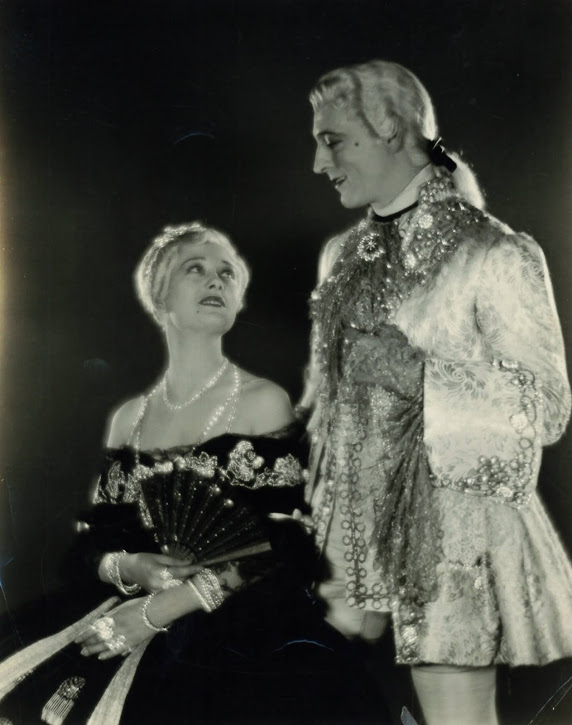

Two Years and 466 Postings Ago...
Greenbriar Picture Shows opened on December 27, 2005. It began as a place to deposit images hopefully unfamiliar to readers. Sometimes I’d post three times a day. The novelty of seeing everything go up instantly was quite a kick. Later I slowed down to once a day. After awhile, it seemed an index and search archive was needed. Greenbriar became for me one of those blogging obsessions people speak of. The movie life seems normal enough to one who lives it. I’ve been reassured in finding there are plenty of others who are similarly driven. The thing I love about the internet and DVD and TCM and all the rest is how they create opportunities for online writers to discover and rediscover movies long unseen. It happened this past year with Ace In The Hole, These Are The Damned (TCM leased a package from Sony, and suddenly this Columbia owned Hammer Film was back after decades of hibernation), and many others. Something like Witchfinder General resurfaces and informed voices are heard worldwide in celebration. I love the instant gratification of newsgroups and forums. Every day’s an adventure in this peculiarly twenty-first century funhouse. I don’t read a tenth of stuff daily I know I’d like. Forty-eight hour days might help, but not much. Blogs I follow are great because they tap into their creator’s personality and experience. Would print media ever have allowed for such expression? I think someday we’ll look back and marvel at this revolution we’re living. I don’t take it for granted a moment because I remember what it was like when we didn’t have all this. Most Greenbriar readers probably do too as I suspect we’re in the approximate same age group. Rest assured I appreciate each and all who comment here. Sometimes I think some of you ought to be writing these posts instead of me. The things I learn from readers! When Google took over Blogger, they instituted policies requiring commenters to sign on with Google first, essentially becoming a "member" of that group. I’ve not seen any downside to this, but it has complicated the commenting process somewhat. Anyone who’s had problems might look into signing with Google. It’s simple and requires no meaningful forfeit of privacy. Anyway, to those who share views with other Greenbriar readers and myself, I do offer thanks and invite you to please continue.


I’ve spent these two years reflecting on movies that have impacted on me. Most I came upon during that age of wonderment we all experience between ten and twenty when the best picture-viewing experiences of our lives are gathered and collated. I could review any number of worthwhile recent films (and I do watch a lot of them), but others are better equipped for that commission. The fact is I like ads and photos and lobby cards they generated during the classic era. Writing about premieres and ballyhoo is as close as I’ll get to reliving them, as I experienced so few classics when they were new. Sobering indeed has been my realization that most everything I speak of at Greenbriar was past before I was born. A shame I can’t get as excited over opening night of National Treasure --- Part Two, but I leave those joys to the present generation between ten and twenty, hoping they get as much fun out of what’s new as I did forty years ago over the likes of Goldfinger and The Dirty Dozen. For what it’s worth, realization of my own diminished capacity for adolescent awe came in 1977 when I went to see Star Wars first-run. We arrived twenty minutes in, and as I recall, there was a boy and two distinctly unappealing robots shuffling amidst a desert wasteland. One of them looked like a vacuum cleaner and made irritating noises. Over the next two hours, I came to know I’d lost touch with whatever it was people wanted in movies. This was the first new release I felt old watching, and that’s some kind of hammer to come down when you’re twenty-three (I’ve just this week captured Star Wars on DVR and intend to give it another chance). Such late seventies fare would accelerate my enthusiasm’s retreat toward the older stuff, and revelations would come, if at all, over encounters with classics I’d never seen. One of these was The Tall T. Some of us drove down to a vintage theatre in eastern NC some "B" western fans had taken over for a nostalgic Saturday of cowboys on the big screen. The place and the people seemed transported from 1957 when this show was new. Certainly the theatre was unchanged from that time. I came away thinking this was one of the greatest things I’d ever seen. That doesn’t happen often once you’ve reached a certain age, as I definitely had by 1992. Was it The Tall T, or this apparent trip backward I’d taken? Looking at the (so far) whole of Greenbriar, I realize there are many films that have had similar effect. I couldn’t be there when Psycho, Citizen Kane, The Searchers, and Sunset Boulevard opened, but with enough trade ads, stills, and ephemera, maybe it’s possible to travel at least part of the way back. Speaking of which, I’d invite readers, especially those who’ve joined Greenbriar Picture Shows more recently, to visit (or revisit) past postings. The search index is a good way to explore what’s been previously published on favorite people and titles. Going into this third year, and time, health, and interested readership permitting, Greenbriar looks forward to keeping its house lights burning.
PHOTO CAPTION: Up top, Joan Crawford takes a break from shooting Ice Follies Of 1939 to celebrate Greenbriar's second anniversary.












































